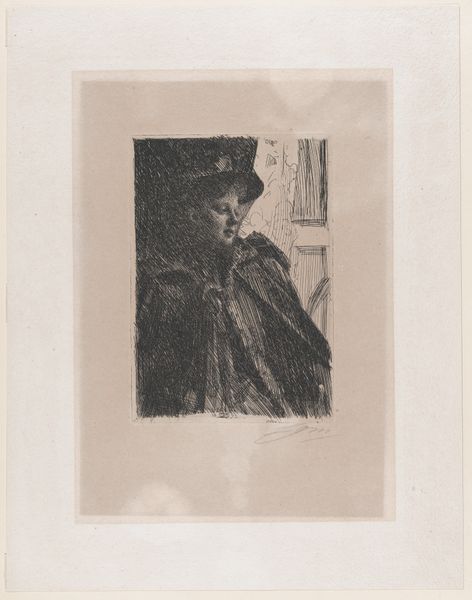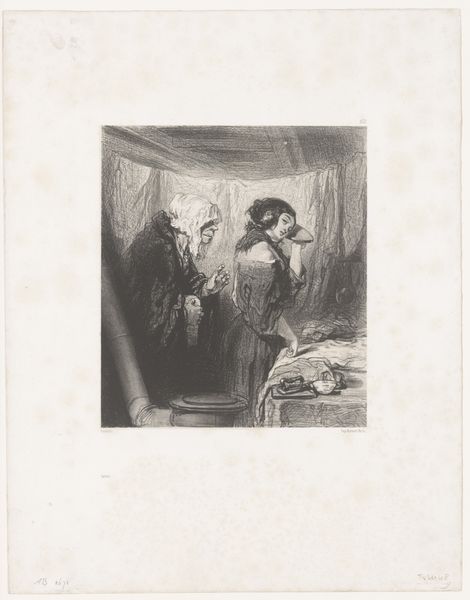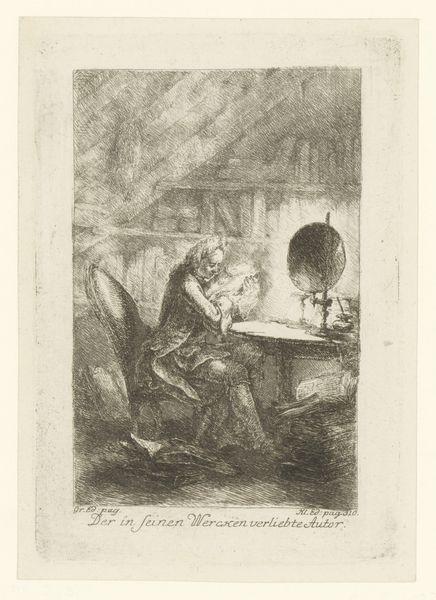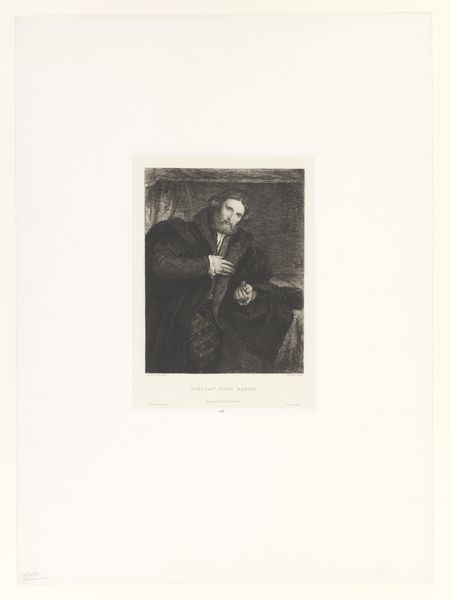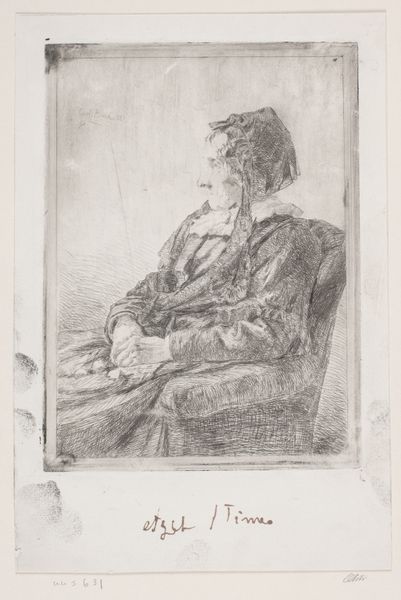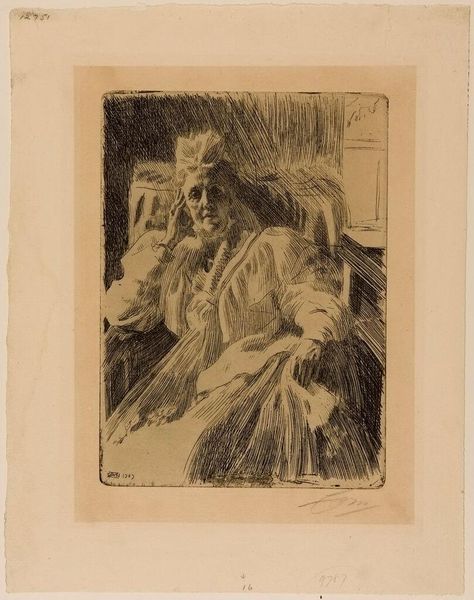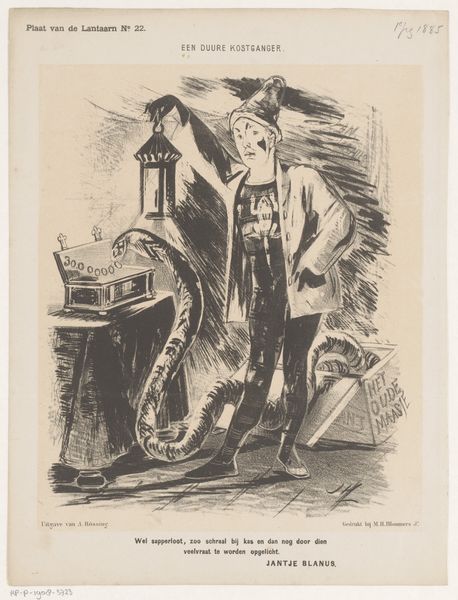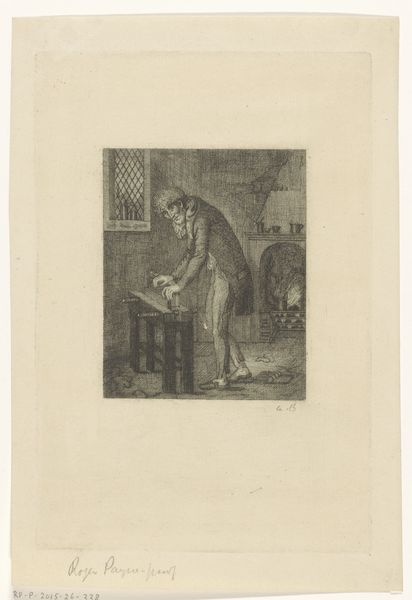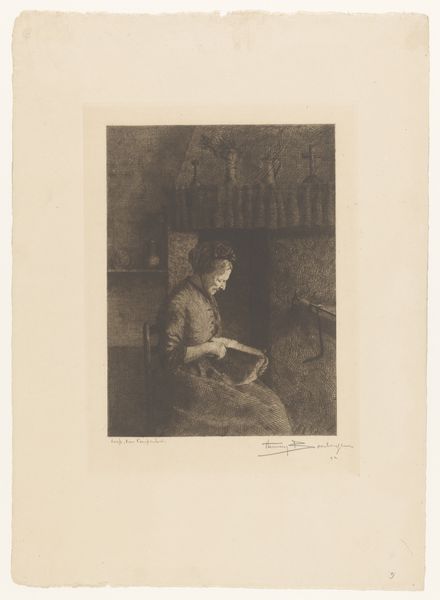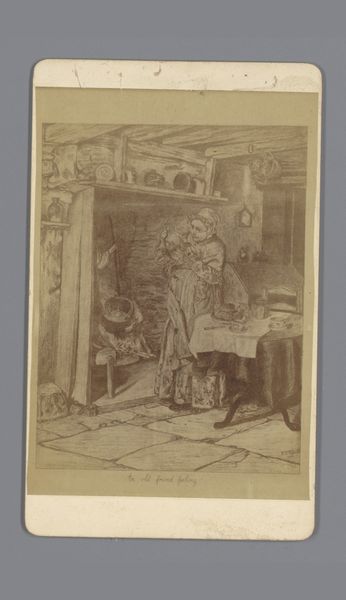
drawing, print, etching, ink
#
portrait
#
drawing
#
ink drawing
# print
#
etching
#
ink
#
men
#
realism
Dimensions: Plate: 10 7/8 × 7 13/16 in. (27.6 × 19.8 cm) Sheet: 18 11/16 × 13 7/8 in. (47.5 × 35.3 cm)
Copyright: Public Domain
Curator: Anders Zorn's etching, "Henry Marquand," created in 1893, offers an intriguing glimpse into the life of the American financier and philanthropist. What’s your first impression of this piece? Editor: My first impression is… somber. There’s a certain weightiness to the figure, a quiet contemplation, intensified by the limited tonal range and the tight composition. The shadowy background presses in on Marquand, creating a feeling of enclosure. Curator: Zorn's etching technique really enhances that, doesn’t it? Notice the density of lines used to depict Marquand's suit compared to the more delicate lines around the face, directing the viewer's gaze. Etching as a process, involves physically laboring on a metal plate, bathing it in acid – it's a real mark-making exercise that embodies its own kind of social status through skilled making and labor. Editor: Absolutely. And the context! Marquand was a significant figure, president of the Metropolitan Museum of Art here in New York. So, we are dealing with themes of power, patronage, and cultural gatekeeping. His stance almost suggests a careful guard of these prized commodities. Look at what the artist positions behind the man. Curator: Indeed, it's a study in class and collection. We have Marquand, carefully rendered. And just look beyond to notice the hint of fine porcelain behind him. He seems to stand beside it. I wonder what all this suggests for the means of production related to art at the end of the 19th century? Was the subject, Mr. Marquand, actively shaping and promoting these methods through collection? Editor: Exactly! It speaks volumes about the cultural and economic systems in place at the time. Marquand, in his role at the Met, helped to solidify certain narratives of art history, privileging some forms and artists over others. Consider who *wasn't* being represented at the museum and the message that sends about cultural value and belonging. The very nature of what he’s choosing to show speaks to issues of social inclusion and exclusion, and that informs our understanding of pieces today. Curator: Looking closer at the composition, Zorn deliberately uses the medium's inherent ability to mass produce to immortalize wealth and class—etching, by its very nature, allows for the multiple reproduction of this image. What does that say about social identity during this period? Editor: A very pertinent observation. This wasn't just about creating a portrait of an individual but about replicating and distributing an image of status and power. To look closely, then, invites conversations about art's entanglement within the complex networks of commerce and identity. It offers an insightful, even if shadowed, glimpse into that period. Curator: Definitely. Thank you.
Comments
No comments
Be the first to comment and join the conversation on the ultimate creative platform.
